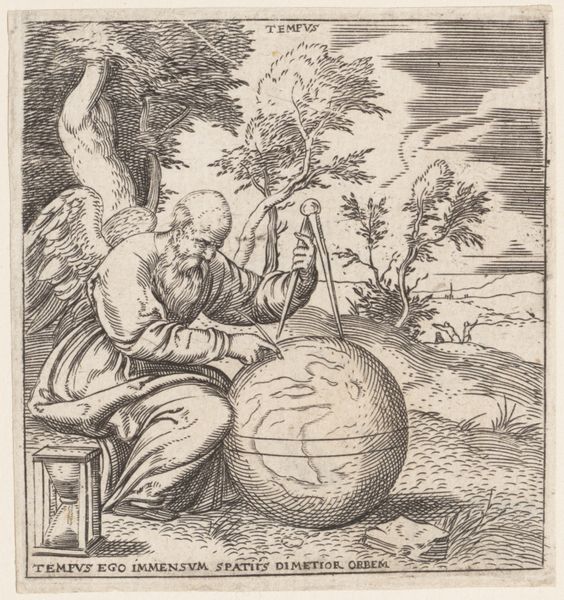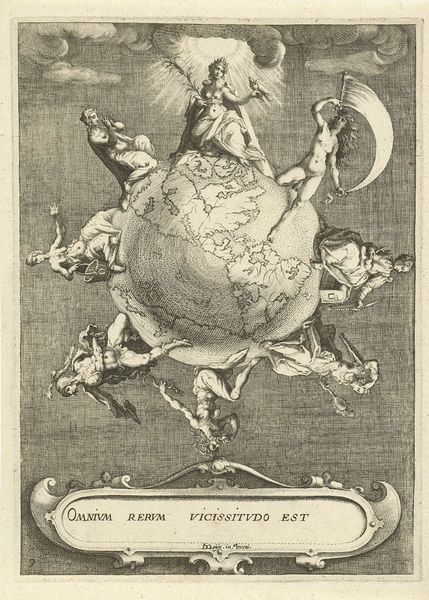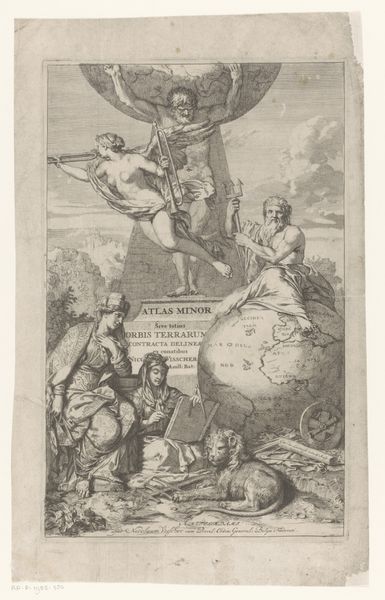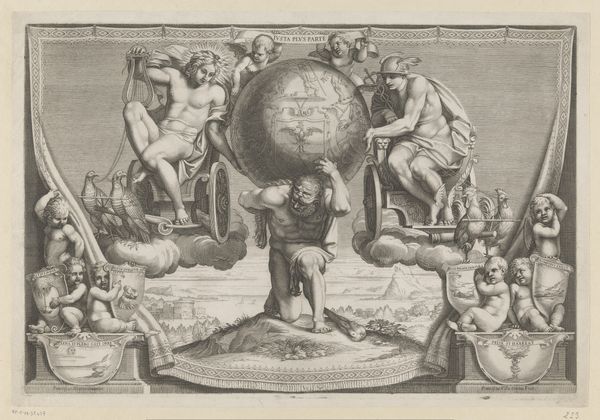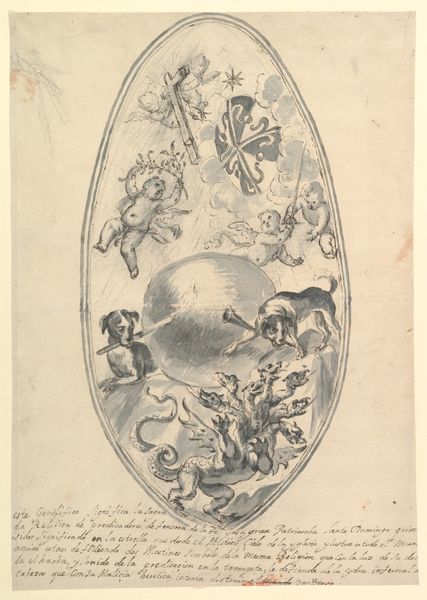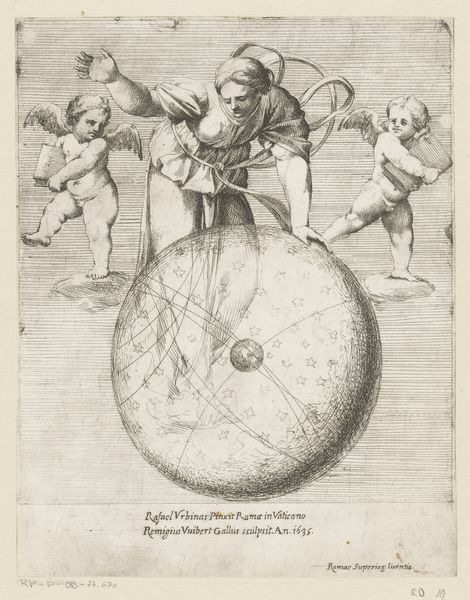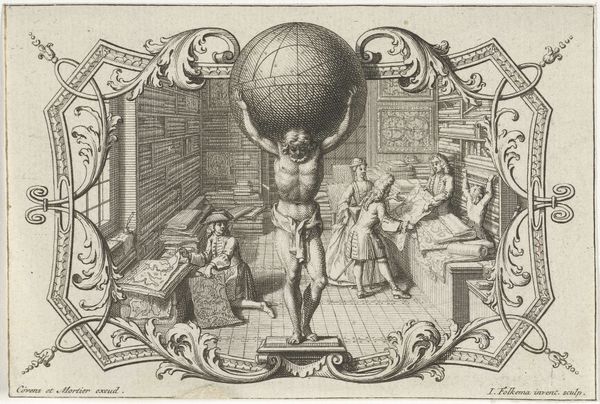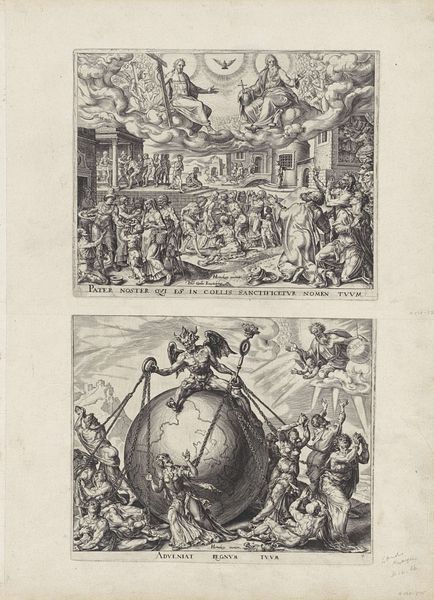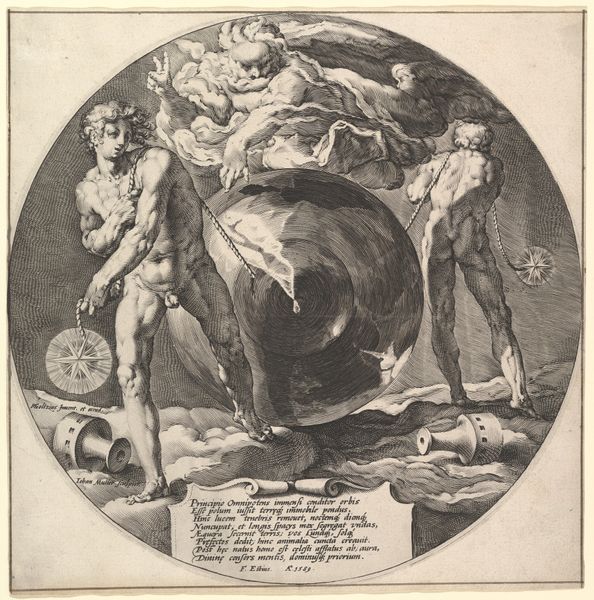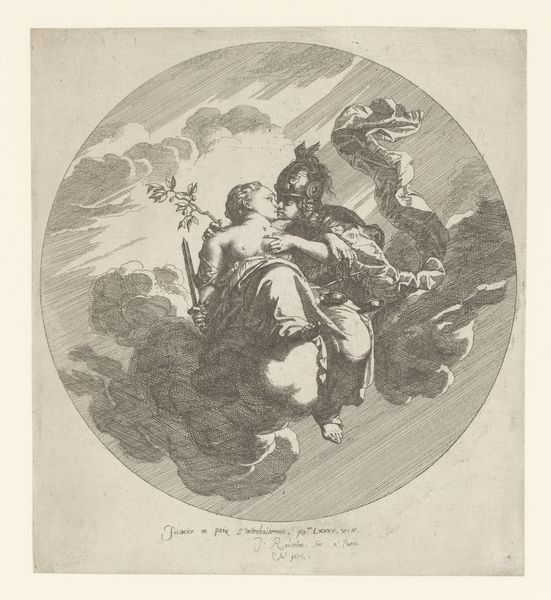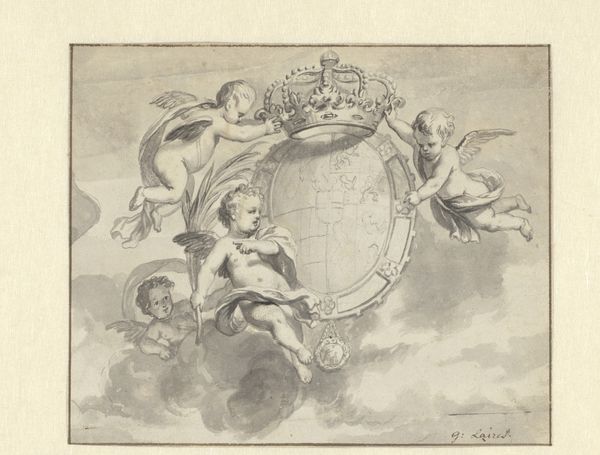
engraving
#
allegory
#
baroque
#
old engraving style
#
history-painting
#
engraving
Dimensions: height 348 mm, width 272 mm
Copyright: Rijks Museum: Open Domain
Curator: This engraving, titled "Astronomische voorstelling van de dageraad met twee putti," created in 1691 by Nicolas Bocquet, offers a fascinating allegorical perspective on the dawn. Editor: Immediately, what strikes me is the image's serene, almost ethereal quality, achieved through the precise linework and balanced composition, even though it's a monochrome engraving. Curator: Bocquet's piece speaks volumes about the 17th-century worldview, a time steeped in both burgeoning scientific inquiry and enduring allegorical tradition. Notice how the central female figure, personifying dawn, stands astride a globe, mediating between the celestial and earthly realms. The two putti, carrying what appear to be texts, perhaps symbolize knowledge or divine inspiration accompanying the arrival of a new day. Editor: Precisely, it is a carefully constructed visual statement. Consider how the linear structure defines the form and creates areas of shading. This modulation gives the engraving depth, especially when combined with the circular forms that echo throughout—from the globe to the swirling ribbons above the figure. What meaning do you derive from this construction? Curator: The act of representing abstract concepts—knowledge, time, the dawn—through female figures speaks to the limited role of women in intellectual movements in the 17th-century despite embodying their achievements, almost creating a paradox when viewed through modern feminism. The earth below is a canvas of power. It implies that she dictates human existence on earth. Editor: You're right, viewing the work from a contemporary lens definitely brings out the problematic underlying gender and societal roles and representation. Structurally speaking, one must remember to account for its status as an engraving - consider the detail that comes from such strict forms. Curator: Considering that, seeing how this work reflects the baroque art period’s flair for dramatic storytelling within larger sociopolitical power structures gives an excellent basis for deconstruction. Editor: Indeed. Observing these deliberate lines, patterns, and forms grants access to new interpretations—revealing deeper cultural insights and a profound look at our existence today.
Comments
No comments
Be the first to comment and join the conversation on the ultimate creative platform.
